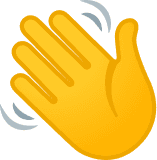Traditional waterfall vs Lean UX
Every designer and organization has different needs and therefore different processes. The traditional Waterfall method follows a linear, sequential path where each phase must be completed before moving to the next.
Lean UX embraces an iterative, cyclical approach that encourages rapid experimentation and continuous feedback. This visual comparison highlights how Lean UX's flexible, user-centered process allows for quicker adaptation and refinement, contrasting with Waterfall's more structured but potentially rigid methodology.
The key difference lies in how feedback is incorporated - Waterfall waits until later stages, while Lean UX integrates user input throughout the entire process
Overview of the three phases and deliverables
Envision
How to evaluate and prioritize projects
Working in fast paced environments has taught me the importance of prioritizing projects effectively. When I receive a project list from the business or product team, my first step is understanding the big picture: the overall company objectives, current sprint goals, and what success looks like for both our team and our users.
To simplify and streamline this process, I developed the COOK Framework.
Much like preparing a delicious meal, prioritizing projects is about balancing the right ingredients contribution, opportunity, obstacles, and key results to create the best possible outcome. Using the COOK Framework, I can evaluate projects with a clear, structured approach that ensures every effort is impactful and aligned with our goals.
Create
Design, Testing, and Implementation
sketches and Low Fidelity
High Fidelity Mockups

How to launch and iterate quickly
Success in UX design requires agile thinking and swift execution. Through my refined process of Envision, Create, and Optimize, I've developed a methodology that ensures rapid delivery while maintaining quality.
01
Envision
Begin with clarity and purpose. What problem needs solving? Who are we solving it for? Is this solution viable? Should we build this? Through focused research and strategic analysis, this phase establishes the foundation by identifying the core problem and validating its viability.
It prepares for the Create phase, where the team can build an MVP with confidence, knowing exactly what problems they're solving and for whom.
02
Create
Execute with precision. Working closely with stakeholders, designers, and developers, we build an MVP (Minimum Viable Product) that captures essential functionality. The focus is on creating testable prototypes that demonstrate core value propositions. During the Optimize phase, we gather feedback and metrics from early adoption users.
03
Optimize
Test and refine relentlessly. We validate with early adopters and pivot based on feedback. If the core value proposition proves invalid, we're not afraid to pivot or pause. For successful launches, we implement robust monitoring systems to track performance metrics and user feedback, enabling data-driven improvements.
Monitoring, Success Metrics, and Iterations
User Testing
User Testing & Validation: Just like hosting open houses to gather real feedback from potential buyers.In UX, The primary purpose is to verify the design with actual users.

Note: For user testing you must consider budgeted for setting up the test, recruiting participants, and analyzing the results, you can sometimes run a full study in a 24-hour period. Therefore sometimes User testing is not a resources company can provide.
Analytics Tools

Heatmaps


Hello!
Thanks for sticking around! If you’re curious to know more about me or want to see what I’m up to use the link on the right to connect with me!
Or, if you’re into the classic approach, feel free to check out my fancy paper resume.
@2025 jin, All Rights Reserved











